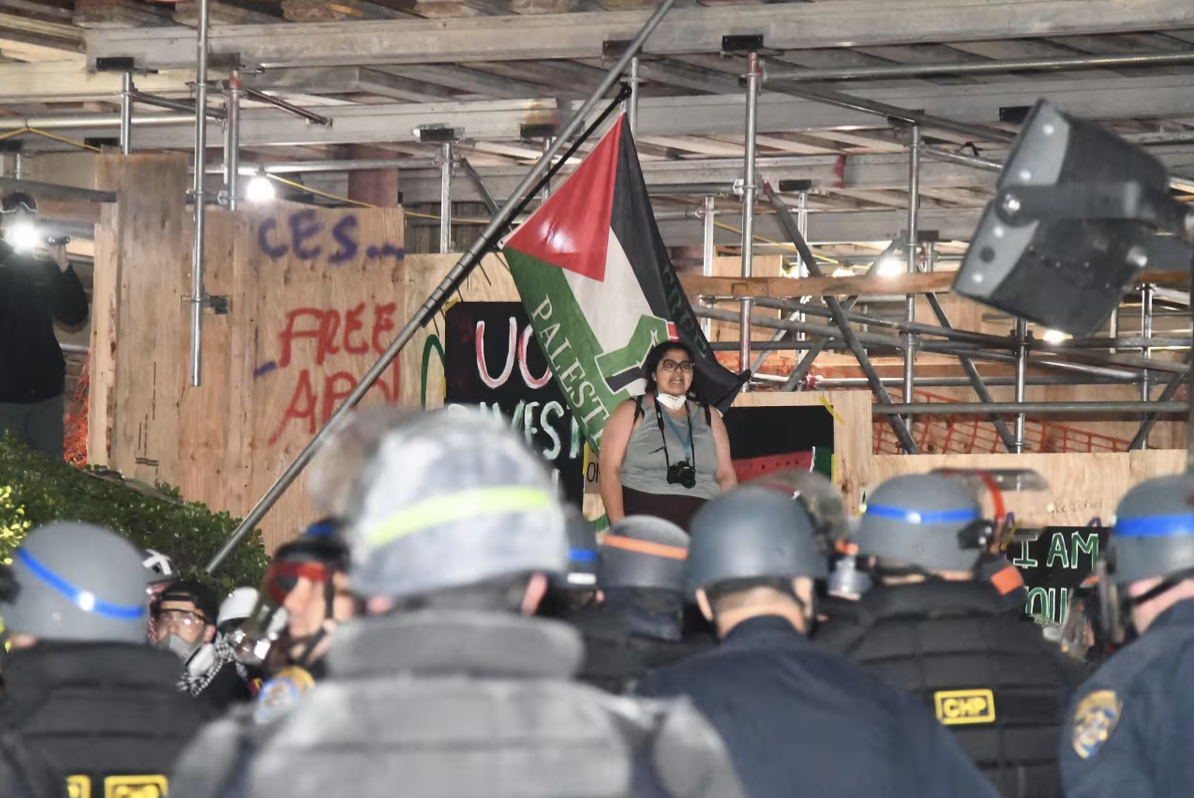By: The Editorial Board – wsj.com – May 2, 2024
A website reveals the planning and strategy behind the current college mayhem.
The recent anti-Israel protests are often portrayed as a spontaneous uprising of student indignation against the Gaza war. But we’re learning that behind the young idealists is an organized movement of leftists who want to spread disorder and whose candid strategy is to defy school administrators and police to achieve their radical goals.
***
“It’s clear that in order for this crisis to develop further, student occupations should take buildings whenever possible,” says an analysis of events at Cal Poly Humboldt. “We can wield the most power by occupying the spaces where classes are held and administrators have offices.”
A post-mortem on protests at the University of Illinois Urbana-Champaign notes that “encampment is escalation. Putting tents up on campus is against almost every campus policy. Refusing to take them down means refusing to listen to a ‘lawful command.’” In other words, breaking school policy and law isn’t an accident; it’s the point of the exercise.
“The basic premise of the encampment is already an escalation that the cops will meet with force,” the memo adds, so “organizers should not concern themselves with de-escalation or ‘remaining peaceful.’”
The Illinois memo advises students to “be prepared to escalate your actions in order to continue making it more expensive—whether materially, financially, or socially” for administrators “to remain complicit than to divest” their endowments from Israel.
This suggests the futility of negotiating with most protesters. University of Illinois administrators described in a campus-safety memo how police “officers made the decision to deescalate the situation and stepped back to reduce the risk of injury to themselves or the demonstrators” after protesters used “pieces of lumber as well as other physical tools and objects to push the officers back.”
The occupiers took this as a sign of “regime” retreat and a signal to escalate the protests. The CrimethInc analysis lauds these protesters for being “prepared to push and de-arrest as needed.” And it offers specific advice on useful tools for radicals: “Plywood, insulation board, lumber, scrap wood, metal sheeting, garbage cans, and water barrels can all be used as raw materials, and some can even be sourced from campus dumpsters.”
An analysis of the protests at Cal Poly Humboldt says “the pro-Palestinian movement must be a movement against the police.” One lesson from “the George Floyd Uprising” is that “it is best to come to all demonstrations with goggles, gas masks, laser pointers, and shields. You never know what a casual sleepover might become.” A dispatch from the University of Texas at Austin encourages protestors to “surround” and “force out the police.”
These protest guides reveal that universities are attracting professional demonstrators. “One experienced participant” at the Columbia protests describes looking fondly at the young students with “that manic, electric, slightly dazed look that I associate with participating for the first time in some sort of revolutionary upheaval.” It brought back memories of “our first protests and occupations” including “Occupy Wall Street, the George Floyd Rebellion.”
Ah, there’s nothing like the memory of your first time at the barricades.
The goal of these pros is to spread their knowledge to recruit and train another generation. As one memo puts it: The University of Illinois “encampment taught us: if you build it, they will defend it, they will learn from it, they will grow from it.” New York police say nearly half of the protesters arrested at Columbia and City College campuses weren’t students.
***
These radicals are also hiding behind students. The Columbia report praises “a new cross-pollination between campus life and protest activity,” saying that “to the extent to which the administration cannot distinguish between the student body as a whole and the protesters, everyone involved is safer.”
Everyone, that is, except students who want to attend class to get their degree, Jewish students, administrators, police and anyone who doesn’t yield to the mob.
All of this shows that the spreading protest movement isn’t a political accident. It’s part of a larger strategy of spreading disorder to force colleges and U.S. policy to bend to the left’s will and demands. As events this week at Columbia and UCLA show, trying to appease this law-breaking will encourage more of it.
To see this article in its entirety and to subscribe to others like it, please choose to read more.
 Listen Online
Listen Online Watch Online
Watch Online Find a Station in Your Area
Find a Station in Your Area








 Listen Now
Listen Now Watch Online
Watch Online
